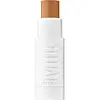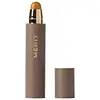Milk Makeup Flex Foundation Stick Versus Merit Beauty The Minimalist Perfecting Complexion Foundation and Concealer Stick
What's inside
What's inside
 Key Ingredients
Key Ingredients

 Benefits
Benefits

 Concerns
Concerns

 Ingredients Side-by-side
Ingredients Side-by-side

Ethylhexyl Palmitate
EmollientBis-Diglyceryl Polyacyladipate-2
EmollientOctyldodecanol
EmollientPolyethylene
AbrasiveSilica
AbrasiveMicrocrystalline Wax
Emulsion StabilisingPentaerythrityl Hydrogenated Rosinate
Mica
Cosmetic ColorantPolyglyceryl-3 Diisostearate
EmulsifyingCopernicia Cerifera Wax
Euphorbia Cerifera Wax
Lavandula Angustifolia Oil
MaskingHelianthus Annuus Seed Oil
EmollientTrifolium Pratense Flower Extract
AstringentAlthaea Officinalis Root Extract
Skin ConditioningChamomilla Recutita Flower Extract
MaskingNymphaea Caerulea Flower Extract
Skin ConditioningTocopheryl Acetate
AntioxidantTocopherol
AntioxidantAscorbyl Palmitate
AntioxidantHydrogenated Polyisobutene
EmollientDisteardimonium Hectorite
StabilisingOctyldodecyl Neopentanoate
EmollientIsononyl Isononanoate
EmollientPentaerythrityl Tetra-Di-T-Butyl Hydroxyhydrocinnamate
AntioxidantButylene Glycol
HumectantWater
Skin ConditioningHdi/Trimethylol Hexyllactone Crosspolymer
Isopentyldiol
HumectantPropylene Carbonate
SolventPhenoxyethanol
PreservativeLinalool
PerfumingCI 77891
Cosmetic ColorantIron Oxides
Ethylhexyl Palmitate, Bis-Diglyceryl Polyacyladipate-2, Octyldodecanol, Polyethylene, Silica, Microcrystalline Wax, Pentaerythrityl Hydrogenated Rosinate, Mica, Polyglyceryl-3 Diisostearate, Copernicia Cerifera Wax, Euphorbia Cerifera Wax, Lavandula Angustifolia Oil, Helianthus Annuus Seed Oil, Trifolium Pratense Flower Extract, Althaea Officinalis Root Extract, Chamomilla Recutita Flower Extract, Nymphaea Caerulea Flower Extract, Tocopheryl Acetate, Tocopherol, Ascorbyl Palmitate, Hydrogenated Polyisobutene, Disteardimonium Hectorite, Octyldodecyl Neopentanoate, Isononyl Isononanoate, Pentaerythrityl Tetra-Di-T-Butyl Hydroxyhydrocinnamate, Butylene Glycol, Water, Hdi/Trimethylol Hexyllactone Crosspolymer, Isopentyldiol, Propylene Carbonate, Phenoxyethanol, Linalool, CI 77891, Iron Oxides
Hydrogenated Polydecene
EmollientCaprylic/Capric Triglyceride
MaskingOctyldodecanol
EmollientSilica
AbrasivePolyethylene
AbrasiveDipentaerythrityl Hexahydroxystearate/Hexastearate/Hexarosinate
Skin ConditioningHydrogenated Polyisobutene
EmollientCopernicia Cerifera Wax
Synthetic Wax
AbrasiveTriethoxycaprylylsilane
Cera Microcristallina
Emulsion StabilisingSorbitan Isostearate
EmulsifyingPancratium Maritimum Extract
BleachingTocopheryl Acetate
AntioxidantDimethicone
EmollientCaprylyl Glycol
EmollientPropylene Carbonate
SolventEthylhexylglycerin
Skin Conditioning1,2-Hexanediol
Skin ConditioningStearalkonium Hectorite
Gel FormingGlycerin
HumectantWater
Skin ConditioningMica
Cosmetic ColorantBHT
AntioxidantCI 77491
Cosmetic ColorantCI 77891
Cosmetic ColorantHydrogenated Polydecene, Caprylic/Capric Triglyceride, Octyldodecanol, Silica, Polyethylene, Dipentaerythrityl Hexahydroxystearate/Hexastearate/Hexarosinate, Hydrogenated Polyisobutene, Copernicia Cerifera Wax, Synthetic Wax, Triethoxycaprylylsilane, Cera Microcristallina, Sorbitan Isostearate, Pancratium Maritimum Extract, Tocopheryl Acetate, Dimethicone, Caprylyl Glycol, Propylene Carbonate, Ethylhexylglycerin, 1,2-Hexanediol, Stearalkonium Hectorite, Glycerin, Water, Mica, BHT, CI 77491, CI 77891
 Reviews
Reviews

Ingredients Explained
These ingredients are found in both products.
Ingredients higher up in an ingredient list are typically present in a larger amount.
Ci 77891 is a white pigment from Titanium dioxide. It is naturally found in minerals such as rutile and ilmenite.
It's main function is to add a white color to cosmetics. It can also be mixed with other colors to create different shades.
Ci 77891 is commonly found in sunscreens due to its ability to block UV rays.
Learn more about CI 77891Copernicia Cerifera Wax comes from a palm tree native to Brazil; another name for this ingredient is Carnauba Wax.
This ingredient is used to thicken texture and also leaves behind a film when applied.
Fun fact: This wax has the highest melting point of all natural waxes and low solubility.
Learn more about Copernicia Cerifera WaxHydrogenated Polyisobutene is a synthetic polymer. Polymers are compounds with high molecular weight. Hydrogenated Polyisobutene is an emollient and texture enhancer.
In one study, Hydrogenated Polyisobutene showed better skin hydration levels than Caprylic/Capric Triglyceride. As an emollient, it helps keep your skin soft and hydrated by trapping moisture in.
Hydrogenated Polyisobutene is often used as a mineral oil replacement.
Learn more about Hydrogenated PolyisobuteneMica is a naturally occurring mineral used to add shimmer and color in cosmetics. It can also help improve the texture of a product or give it an opaque, white/silver color.
Serecite is the name for very fine but ragged grains of mica.
This ingredient is often coated with metal oxides like titanium dioxide. Trace amounts of heavy metals may be found in mica, but these metals are not harmful in our personal products.
Mica has been used since prehistoric times throughout the world. Ancient Egyptian, Indian, Greek, Roman, Aztec, and Chinese civilizations have used mica.
Learn more about MicaOctyldodecanol is a fatty alcohol. It is primarily used to enhance the texture of products.
As an emulsifier, Octyldodecanol helps prevent the oils and waters from separating. It also prevents ingredients from creating foam when shaken.
Octyldodecanol is created by reducing fatty acid to an alcohol.
Due to its high molecular weight, it does not get absorbed into the skin.
Learn more about OctyldodecanolPolyethylene is a synthetic ingredient that helps the skin retain moisture. It is a polymer.
It is also typically used within product formulations to help bind solid ingredients together and thicken oil-based ingredients. When added to balms and emulsions, it helps increase the melting point temperature.
This ingredient is a solvent. It helps dissolve active ingredients and alter the texture of products.
Propylene Carbonate is commonly used in makeup and with clay, such as montmorillonite or bentonite.
Studies show this ingredient to be safe for cosmetics. When it is undiluted, it can cause skin irritation. (It is always diluted in skincare and makeup). This ingredient is water-soluble.
Propylene Carbonate is created from propylene glycol and carbonic acid.
Learn more about Propylene CarbonateSilica, also known as silicon dioxide, is a naturally occurring mineral. It is used as a fine, spherical, and porous powder in cosmetics.
Though it has exfoliant properties, the function of silica varies depending on the product.
The unique structure of silica enhances the spreadability and adds smoothness, making it a great texture enhancer.
It is also used as an active carrier, emulsifier, and mattifier due to its ability to absorb excess oil.
In some products, tiny microneedles called spicules are made from silica or hydrolyzed sponge. When you rub them in, they lightly polish away dead skin layers and enhance the penetration of active ingredients.
Learn more about SilicaTocopheryl Acetate is AKA Vitamin E. It is an antioxidant and protects your skin from free radicals. Free radicals damage the skin by breaking down collagen.
One study found using Tocopheryl Acetate with Vitamin C decreased the number of sunburned cells.
Tocopheryl Acetate is commonly found in both skincare and dietary supplements.
Learn more about Tocopheryl AcetateWater. It's the most common cosmetic ingredient of all. You'll usually see it at the top of ingredient lists, meaning that it makes up the largest part of the product.
So why is it so popular? Water most often acts as a solvent - this means that it helps dissolve other ingredients into the formulation.
You'll also recognize water as that liquid we all need to stay alive. If you see this, drink a glass of water. Stay hydrated!
Learn more about Water